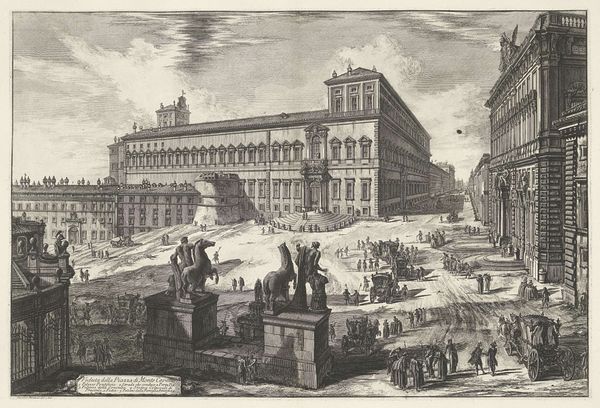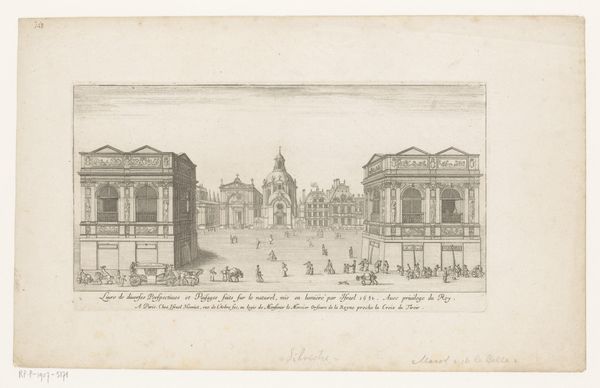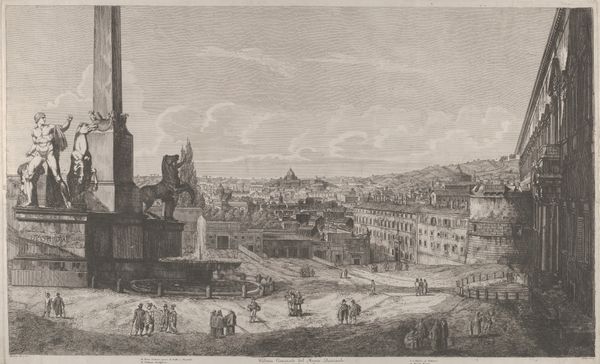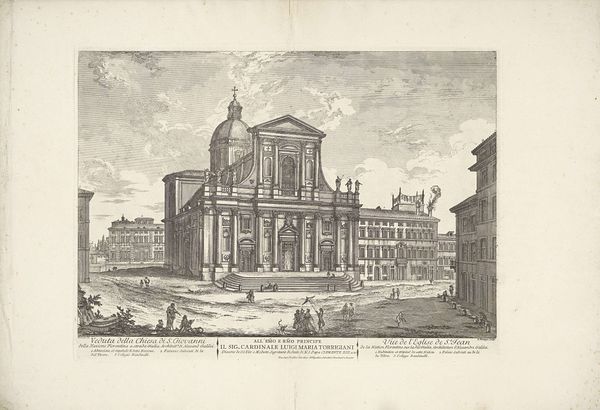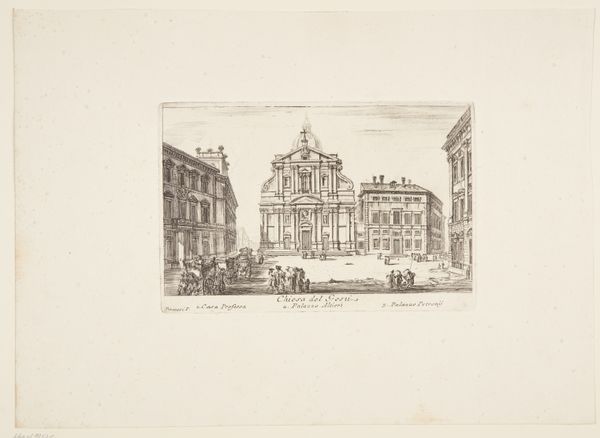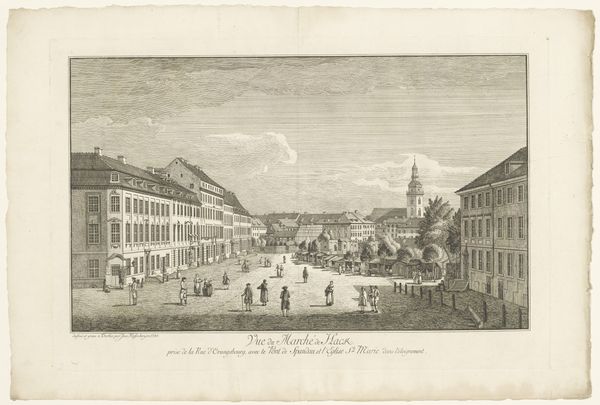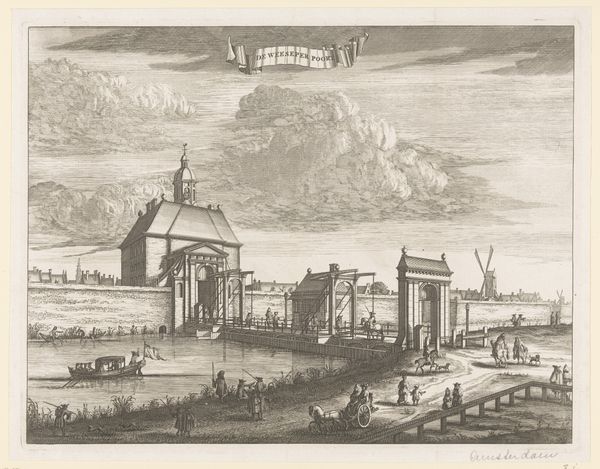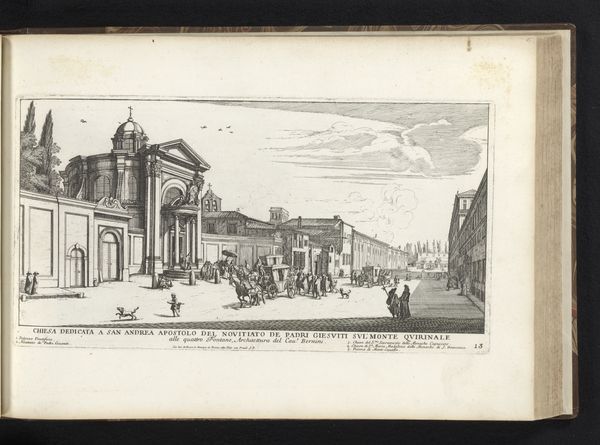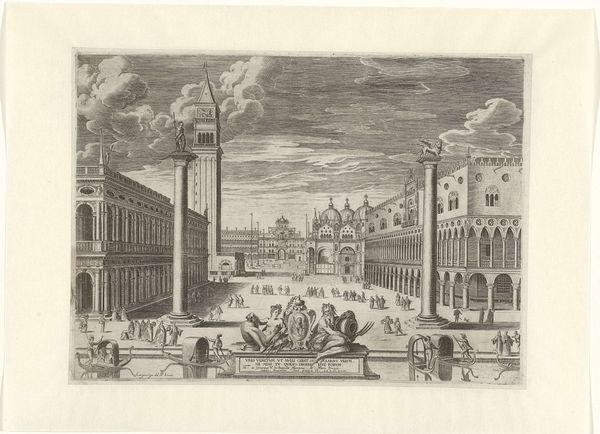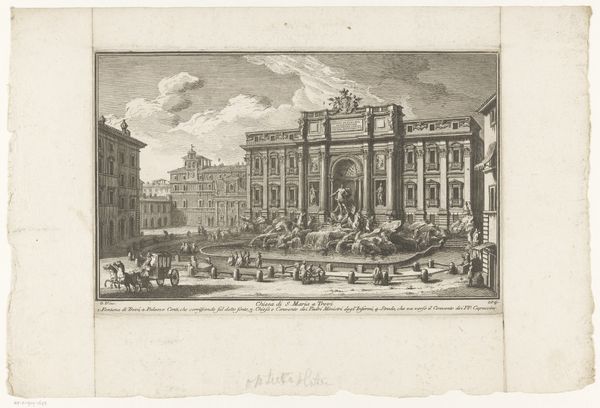
print, etching, engraving
#
baroque
# print
#
etching
#
landscape
#
etching
#
cityscape
#
engraving
Dimensions: height 211 mm, width 325 mm
Copyright: Rijks Museum: Open Domain
Curator: Here we have an etching and engraving entitled "Gezicht op de Alte Markt, te Potsdam," which translates to "View of the Old Market in Potsdam." It's part of the Rijksmuseum collection and was created sometime between 1740 and 1774 by an anonymous artist. What's your first take? Editor: Oh, it's got such a lovely, airy quality to it, almost like a dream. The delicate lines of the etching create a bustling yet peaceful scene. There's such a sense of organized chaos; the baroque architecture reaching for the sky amidst everyday life. Curator: I agree, there is a tension in how it depicts space, isn't there? Considering this work would have been made in the midst of immense social stratification, and the city of Potsdam was being greatly influenced by Prussian military culture, I see the architecture here as projecting power, asserting its presence upon the population bustling below. Editor: I think that's right; I can almost hear the echoes of military drills mixed in with the vendors' cries. And you have these rigid building designs but also, look at how freely people move through the square; women bargaining over textiles, families passing, men deep in conversation. The market becomes this social leveler—a site where different identities converge. Curator: It also reminds me of canaletto cityscapes. Although rendered with a lighter touch, this reminds me that landscapes like this served more than artistic documentation—they became symbols of status and enlightenment ideals. Even in print, you get a sense of Potsdam asserting its importance, displaying itself as a seat of power. Editor: And to think, while this anonymous artist diligently captured Potsdam’s likeness on copper, these power structures you mention were complicit in colonial expansion, impacting social structures and natural resources across the globe. Even art like this, in its subtle grandeur, reinforces colonial legacies. How are we to consider architectural progress in relation to systems of injustice and subjugation? Curator: You offer such important connections, and to bring them to what might otherwise just seem like a distant vista—the way such subtle perspectives shift everything… Well, now when I look at it, I wonder about everything beyond the frame, all the stories hidden in the cobblestones. Editor: Absolutely, It has left me contemplating the dualities embedded in Potsdam's history and its representation, how architectural aspiration interacts with cultural legacies in creating layered perspectives on civic identity.
Comments
No comments
Be the first to comment and join the conversation on the ultimate creative platform.

